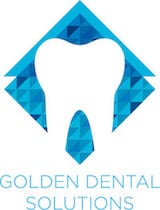Restorative Dentistry in Denver, CO
What Is Restorative Dentistry?
Restorative dentistry, also known as prosthodontic dentistry, can help a patient who has damaged or missing teeth, restore the overall health and aesthetics of their teeth. Whether from disease, injury, or other causes, receiving proper treatment for damaged or missing teeth is essential. This will help prevent further problems and help the patient with any difficulties eating or speaking.
Why would I need restorative dentistry?
Restorative dentistry, as the name implies, is necessary to restore function to your teeth and your overall oral health. Our doctors may simply need to crown a tooth with a deep crack or place an inlay or onlay in a tooth with extensive decay. Or there may be more involved. A patient usually knows if he or she is in need of restorative treatment because their tooth/teeth or gums have likely started to be painful. Issues such as gum disease need to be addressed with restorative dentistry, as their continued progression will lead to tooth loss. In most cases, if a person opts to not have a restoration made to a damaged tooth or other oral health problem, the problem will become worse and will lead to higher costs and bigger problems.
How do teeth become damaged?
There are obvious causes — you tripped and knocked a tooth out, or you bit into a sandwich and something hard cracked or chipped your tooth. Having braces when you were young can sometimes lead to tooth trauma later on and that may dictate a root canal and a crown placed on the tooth.
Other problems are self-inflicted. Lackadaisical brushing and lack of flossing allows plaque and tartar to build on teeth, leading to decay and gum problems. When allowed to continue further, decay left untreated will lead to a tooth likely needing extraction, which will then need to be replaced with an implant or a bridge.
We can damage our teeth subtly, as well, by doing things such as chewing ice or opening bottles with our teeth. Even chewing your fingernails can damage the teeth over time.
What happens if I don’t replace a missing tooth?
Some people put off replacing a tooth that has needed to be extracted or was lost due to trauma, but this is a bad idea. Here’s why.
- Teeth need pressure on each side from adjacent teeth otherwise they tend to move. This is what happens with a missing tooth, as the adjacent teeth slide over to fill the gap. This creates problems with your alignment and bite.
- Chewing and biting involve a great deal of energy down into the tooth. This energy is transferred through the tooth down into the jawbone, stimulating the jawbone to continually regenerate new bone mass. This is key to a healthy, strong, jawbone. Without that energy coming down through the tooth, the jawbone in that area begins to deteriorate and resorb.
- Missing teeth can be embarrassing visually, and can also create whistling sounds when pronouncing certain words. And missing molars can create problems with chewing, making the person avoid certain foods, which can cause nutritional deficiencies.
Dental Restoration Candidates
You may be a good candidate for restorative dental procedures if you have:
- Chipped or cracked teeth
- Missing teeth
- Eroded enamel
- Low bone density
- Gum disease
- Cavities
The best way to know if you are a good candidate for restorative dentistry is to see our doctors for a consultation. They will be able to tell right away which procedures are best suited for your specific needs.
What Is The Difference Between Cosmetic and Restorative Dentistry?
Cosmetic and restorative dentistry procedures often overlap each other. Both forms of dentistry utilize dental implants, bonding, and crowns. The main difference between the two forms of dentistry is what the main focus of the procedure is. With cosmetic dentistry, the dentist will go above and beyond simply restoring the tooth until they’ve created the perfect smile for their patient. Restorative dentistry, however, is more practical. This means that the dentist will focus on ensuring that the patient ends up with a set of healthy, restored, and functional teeth. Finally, the cost of cosmetic treatments is often much higher than the cost of restorative treatments. Many restorative procedures are covered by insurance policies, whereas cosmetic procedures, often, are not.
Restorative Dental Procedures
At our practice, we have several restorative dentistry options available. Which ones we use depends on the patient’s oral health, preference, and recommendation by our doctors. Each of these methods have their own benefits, For a complete full-mouth restorations, we may combine multiple treatments. Our restorative treatments include:
- Full and partial dentures
- Crowns and bridges
- Dental implants
- Mini dental implants
- Inlays and onlays
- Full-mouth reconstruction
Tooth-Colored Fillings
In the past, dental cavities were filled with a mixture of metal alloys, also known as amalgam. Today, tooth-colored or composite fillings are a mixture of resin, glass or quartz and porcelain ceramics. These materials are resilient and long lasting. These fillings are colored to match the patient’s teeth and are practically invisible to the untrained eye. For aesthetic and/or medical purposes, these tooth-colored fillings can be used to replace old and worn dental amalgam, gold or other metal fillings.
While composite fillings have visual advantages, over time they can become discolored. Just like metal fillings, tooth-colored fillings can be set and cured in one visit to the dentist.
Tooth-colored fillings are priced similarly to metallic alloy. They are not as long-lasting as amalgam fillings, and may chip in certain locations of the mouth. The dentist will discuss filling material options for the cavity and recommend options based on the patient’s medical and aesthetic needs.
Veneers
Veneers are very thin, tooth-colored shells of ceramic that are custom-fit and bonded to the front of the teeth. They can create a white, even, and attractive smile. Veneers make it possible to correct a variety of problems, including:
- Spaces between the teeth
- Chipped teeth
- Yellowing or stains
- Misshapen or crooked teeth
- Small holes or pits in teeth
- Uneven or undersized teeth
A veneer placed on top of a tooth can quickly and easily help achieve a beautiful smile. Although some veneers are designed to be removable, most are permanent and are bonded very tightly to the tooth they are protecting. The advancements in technology have improved bonding agents to the point where some types of veneers may last for 20 years or more.
Porcelain Dental Crowns
Our doctors use porcelain crowns to bring strength and beauty to your teeth while also improving their function. Crowns may be used to fix a number of problems, including but not limited to:
- Broken or fractured teeth
- Worn teeth
- Mishaped teeth
- Decayed teeth
It will take two visits to our office to place your porcelain crown. The first visit will be used to take impressions and photos of your teeth. The second visit will take place after the crowns come back from the lab and are ready to be placed. With proper hygiene, porcelain crowns can last decades.
Dental Bridges
Bridges are used to replace missing teeth to prevent the others from moving into the gap. Dental bridges are a single prosthetic consisting of false teeth to fill the gap and crowns for the adjacent teeth.
Implant Dentistry
Dental implants are also used to replace missing teeth but involved the use of a crown, bridge, or dentures to provide the replacement for the actual tooth. Implants provide strength for the missing tooth as they are drilled directly into the jaw bone to resemble the root. After the implant is placed, it must fuse with the bone before applying the crown, bridge, or dentures. By doing so, you receive long-lasting support of the tooth.
I need full-mouth reconstruction. How long will that take?
Full-mouth reconstruction is an involved process that may require up to a full year to complete. Obviously, your timeframe depends on your unique situation. For instance, if we need to replace teeth with dental implants, those implants take up to six months to place and allow the jawbone to grow around the implants. If orthodontic movement is required, that takes time. Once our doctors understand what is needed to fully restore your oral health, they can give you a good idea of the time it will take to do so.
Will my teeth need to be pulled if they are damaged?
At Golden Dental Solutions, we view extraction as a last resort. If a tooth has extensive decay that encompasses too much of the tooth to place a filling, we may be able to place an inlay or onlay and save it. Crowns are “tooth savers,” as they return strength to a compromised tooth that would otherwise merit extraction. We try to avoid pulling a tooth whenever possible, but if we do have to remove an extensively damaged tooth replacing it with a dental implant is a great solution.
Caring for Restored Teeth
Too many people believe that once a tooth is restored, it does not require the same care as untreated teeth. Unfortunately, this is not true. Maintaining a daily oral hygiene routine of brushing at least twice a day and flossing at least once a day can help patients ensure that all teeth remain healthy, especially the restored ones. Patients who do not take care of their teeth risk the failure of their dental restorations. Be sure to ask our doctors how to best maintain your teeth after a restorative procedure.
How Long Can a Tooth-Colored Filling Last?
All dental restorations, with the exception of dental implants, are considered semi-permanent. A filling, whether made of amalgam or a tooth-colored material, is expected to last up to several years. How long your filling lasts will depend on a few different factors. If you bite or chew on hard objects with a dental restoration, it may last only a few years before it becomes loose or damaged. If you don’t brush and floss daily as recommended by your dentist, there is a chance that your filling may degrade more quickly than it would otherwise. In general, the lifespan of a tooth-colored filling tends to be between five and 15 years. Your dentist can discuss various ways in which you can care for your filling to help it last as long as possible.
Are Tooth-Colored Fillings as Strong as Metal Fillings?
Dental fillings have evolved quite a bit over many decades of time. The first dental fillings that were popular were made of gold. As you can imagine, this option became increasingly costly as the value of gold went up. However, gold fillings could last many years, if not indefinitely. Dental amalgam offered a much more affordable and enduring option. These are known as “silver fillings” due to their silver appearance when first placed. Silver fillings, dental amalgams, are metal fillings. They’re made with a combination of various metals, including tin, nickel, and others. This type of filling also contains mercury, which, according to multiple studies, can seep out of the filling into the mouth, into the oral tissues, and into the body from there.
Metal fillings are known for their long-lasting strength. This strength outdoes the average composite filling. However, metal fillings also expand when the material heats up, which it does when you chew. The material then contracts when it cools. So, while a metal filling may be stronger than a tooth-colored filling, it’s also more likely to cause fractures in the tooth over time.
How Can I Replace a Missing Front Tooth?
Losing a front tooth has a direct impact on your appearance, your speech, and much more. Finding the right replacement option is of the utmost importance to your overall well-being. Our doctors are trained in numerous forms of tooth replacement, bringing you choices such as the following:
- Dental implants. This multi-step treatment begins by replacing the missing root with a biocompatible titanium post. In a second step, a lifelike crown is attached to the implant post, restoring your appearance as well as full biting and chewing capacity.
- Dental implant-supported bridge. If you’ve lost two or more adjacent teeth, you may be a great candidate for an implant-supported bridge, in which multiple crowns are secured together and affixed to one dental implant.
- Traditional bridge. A traditional dental bridge secures one or more artificial teeth onto two crowns. These are fitted over two natural teeth. A longstanding option, the traditional bridge has only one major downside, and that is that your dentist must reduce two otherwise healthy teeth to hold the anchor crowns. If we can avoid altering natural tooth structure, we prefer to do so.
- Removable partial dentures. A removable partial denture replaces the missing tooth or teeth with artificial teeth set into a natural-looking acrylic base that fits over the gums. The partial denture is secured into place through claps that fit around adjacent teeth.
What are Inlays and Onlays?
Inlays and onlays are two of several developments in recent dental history. One way to describe them is as in-between restorations. They’re steps between fillings and dental crowns, with the inlay being the smaller of the two. Like dental crowns, inlays and onlays are fabricated in a dental lab, which means you’ll need two visits to complete this treatment.
A dental inlay is a substantial restoration made of high-quality ceramic. The restoration is made to match the specific space that is left in your tooth after the damaged structure has been removed. This area is within the four corners of the chewing surface of the tooth.
An onlay isn’t necessarily larger than an inlay, although it can be. This restoration is made to fill the empty space left after tooth decay is removed from an area that extends over one of the four corners of the chewing surface of the tooth.
Schedule a consultation
If you think you are a good candidate for restorative dental procedures, call (303) 277-9600 to schedule a consultation. Our practice serves patients from Denver, Arvada, Golden and surrounding areas.

Our Office Would Love to Hear From You!
If you have any questions about the services we offer or would like to schedule an appointment, please call us today at (303) 277-9600

 5 Stars from over 200 reviews!
5 Stars from over 200 reviews! 




